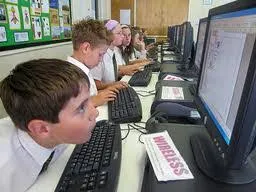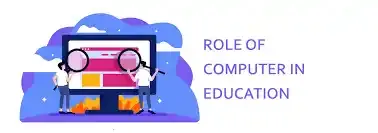The world of computer is fascinating,. Computer we know has become part of man and has supported all works of human endeavors. The application of computer is highly comparative, imperative and competitive. Computer in education cannot be an exception. The teaching-learning process today has been greatly influence by computer.
Presently, computer has become the part of human life.
https://www.google.com/search?q=computer+In+Education&client=ms-opera-mini-android&channel=new&source=lnms&tbm=isch&sa=X&ved=0ahUKEwii0If_xITrAhWHlhQKHbTdA0wQ_AUIBigB&biw=320&bih=452#
Every field o
And activity in life is affected and benefited by the application or use of computer and education is not an exception. Teaching and learning is greatly affected by the use of computers in many ways. The learner and the teacher therefore are in need of some working knowledge of the use of computers.
The Genesis of computer dates back to the age of discovery of numbers and counting system. Counting with pebbles was perhaps the first calculating technique used by Human beings. The age of computer discovery came with counting with pebbles as a calculating technique first used by man. This was followed by Abacus; a counting machine used by the Orientals 5000 years ago and is still the primary form of number crunching.
GENERAL STRUCTURE/WORKING
The computer is just like the human brain, it consists of the subsystems namely;
- INPUT: the input subsystem is used in putting or inputting outside information in the machine just like our Sense organs work for the brain in collecting information from the environment..
- ARITHMETIC and LOGIC: The arithmetic and logic subsystem is the arithmetic and logic mind of the computer and responsible for data manipulation and computation. This is done with utmost accuracy and extremely high speed.
- OUTPUT: The output subsystem resembles the output system of the human brain to furnish the answered information. In the brain, it is orally and writing but in computers, it is done in the form of display(visualized) on the screen of the monitor, the printer in the form of printed materials or in the form of voice as in cassette recorders.
- The control subsystem controls the execution of the programme and co-ordinates all activities of the computer functions in two phases in a cyclic manner;
(a) The instructional phase and
(b) The execution phase.
The Teachers' productivity and professional practice with the use of ICT.
This can be done in stages:
(a) Awareness Stage: How teachers and staff become ICT literate with regard to what technology is available and how it might be used.
(b) Teachers and staff earn basic skills and begin to apply various ICT tools to their regular tasks and projects.
(c) As teachers and staff become more capable and
Confident with ICT, they begin to integrate and overlap both subject areas and tools.
Conclusion
Computer therefore is a thinking machine ofthe human being that makes use of some well framed meaningful programmes for its operation and utilities. It is an electronic device operating under the control of instruction stored in its memory unit that can accept data(input) process data arithmetically and logically, produce output from the processing and store the result for future use and also disseminate information.
Many thanks

